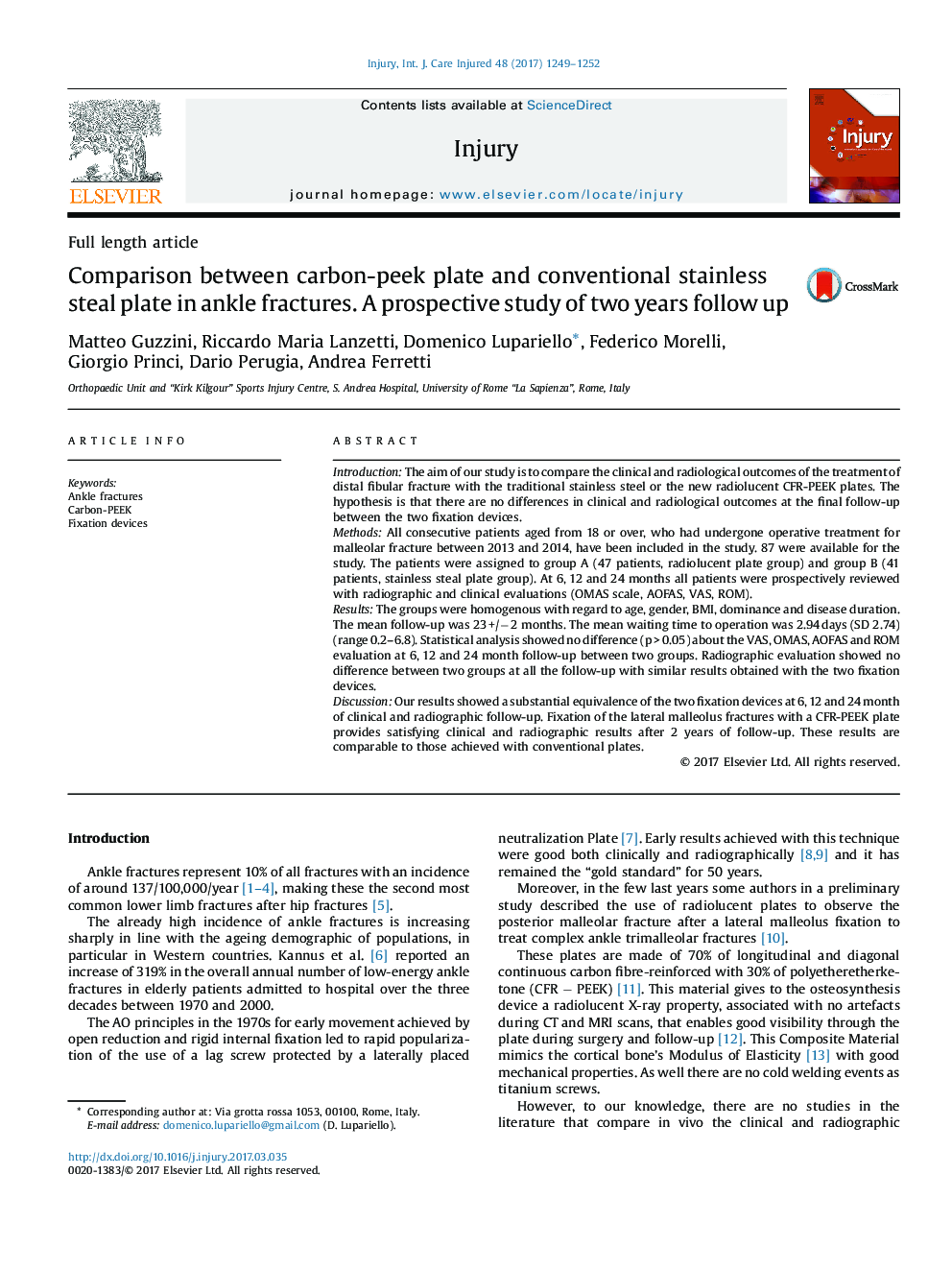| Article ID | Journal | Published Year | Pages | File Type |
|---|---|---|---|---|
| 5652502 | Injury | 2017 | 4 Pages |
IntroductionThe aim of our study is to compare the clinical and radiological outcomes of the treatment of distal fibular fracture with the traditional stainless steel or the new radiolucent CFR-PEEK plates. The hypothesis is that there are no differences in clinical and radiological outcomes at the final follow-up between the two fixation devices.MethodsAll consecutive patients aged from 18 or over, who had undergone operative treatment for malleolar fracture between 2013 and 2014, have been included in the study. 87 were available for the study. The patients were assigned to group A (47 patients, radiolucent plate group) and group B (41 patients, stainless steal plate group). At 6, 12 and 24 months all patients were prospectively reviewed with radiographic and clinical evaluations (OMAS scale, AOFAS, VAS, ROM).ResultsThe groups were homogenous with regard to age, gender, BMI, dominance and disease duration. The mean follow-up was 23 +/â 2 months. The mean waiting time to operation was 2.94 days (SD 2.74) (range 0.2-6.8). Statistical analysis showed no difference (p > 0.05) about the VAS, OMAS, AOFAS and ROM evaluation at 6, 12 and 24 month follow-up between two groups. Radiographic evaluation showed no difference between two groups at all the follow-up with similar results obtained with the two fixation devices.DiscussionOur results showed a substantial equivalence of the two fixation devices at 6, 12 and 24 month of clinical and radiographic follow-up. Fixation of the lateral malleolus fractures with a CFR-PEEK plate provides satisfying clinical and radiographic results after 2 years of follow-up. These results are comparable to those achieved with conventional plates.
